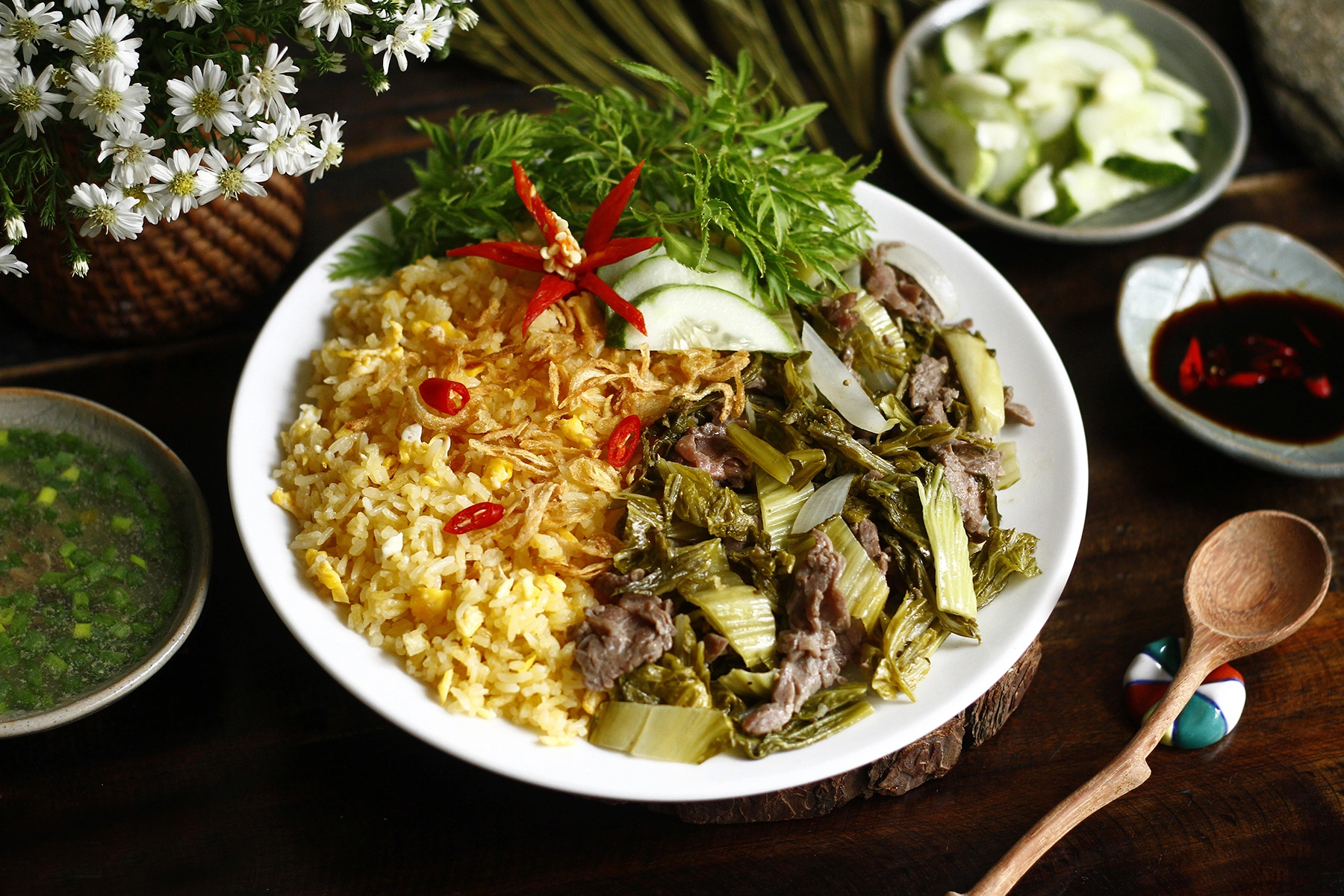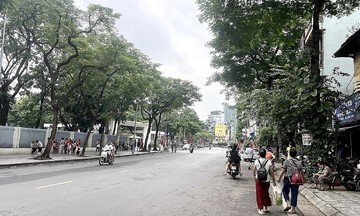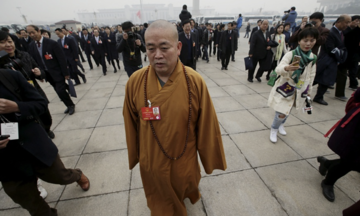In Vietnam, especially in rural areas, leftover rice is rarely wasted. Home cooks often save it, let it dry slightly, then fry it with lard, onions, eggs, or pork crackling to create a delicious and enticing dish.
Fried rice is both economical and transformative, going from soft to crispy, bland to flavorful, and old to new.
Many restaurants now use freshly cooked rice for fried rice, but it's difficult to match the flavor of homemade fried rice made with day-old rice.
 |
Fried rice with beef and pickled mustard greens. Photo: Bui Thuy |
Fried rice with beef and pickled mustard greens. Photo: Bui Thuy
Scientifically, leftover rice has a lower moisture content, making the grains firmer and less likely to stick together when exposed to high heat in a wok. When fried, the grains brown evenly, developing a slightly crispy exterior thanks to the Maillard reaction—the reaction between amino acids and reducing sugars in the starch at high temperatures.
According to Eastern culinary philosophy, a good dish is not just about technique but also about the harmony of yin and yang. Leftover rice (having lost moisture and heat) is considered yin. Frying it in a hot wok with lard (yang) creates a dish of contrasting yet complementary elements—both chewy and crispy, easy to digest, and stimulating to the palate. The sizzling sound in the wok, combined with the aroma of lard, fried onions, and pork crackling, creates an enticing sensory experience.
Freshly cooked rice has high moisture content, making the grains soft and easily broken. Moreover, it's considered yang (hot). Frying it over high heat intensifies the yang, resulting in a sticky, less appealing dish. Some restaurants shortcut the process by adding eggs to separate the grains, but the flavor differs from fried rice made with leftover rice. Therefore, Vietnamese cooks traditionally use leftover rice for fried rice—it's both economical and results in a more balanced flavor.
Vietnamese cuisine is known for its creative use of simple ingredients. Each region has its own way of transforming leftover rice into fried rice. Northern Vietnam favors fried rice with pork crackling or beef and pickled mustard greens. Hue has its signature fried rice with shrimp paste. The Mekong Delta region offers fried rice with salted fish, mixed fried rice, garlic fried rice, and Chinese sausage.
Fried rice, though simple, easily wins over diners not only for its technique but also for the cook's resourcefulness and understanding of culinary harmony. It's a testament to the fact that deliciousness doesn't come from expensive ingredients, but from knowledge and skillful execution.
Bui Thuy












